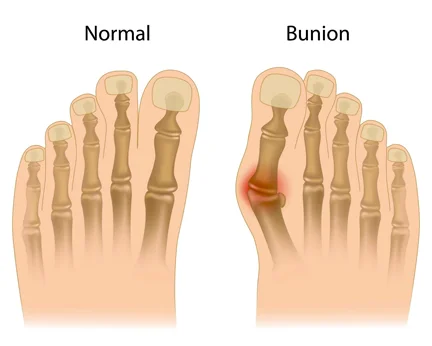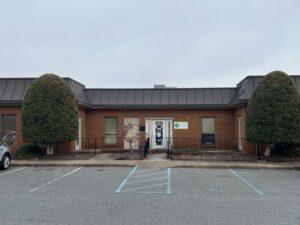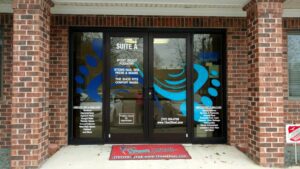Table of Contents
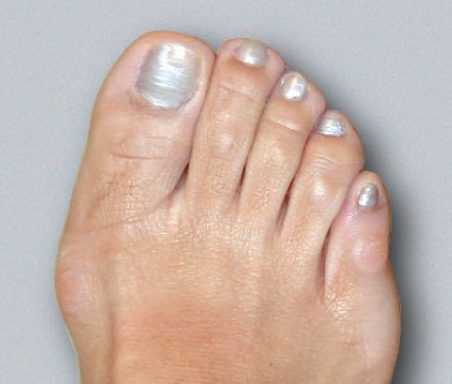
Mild Bunion
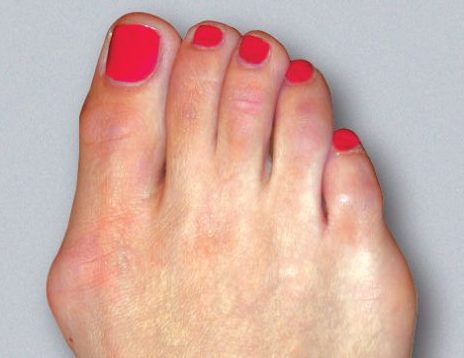
Moderate Bunion
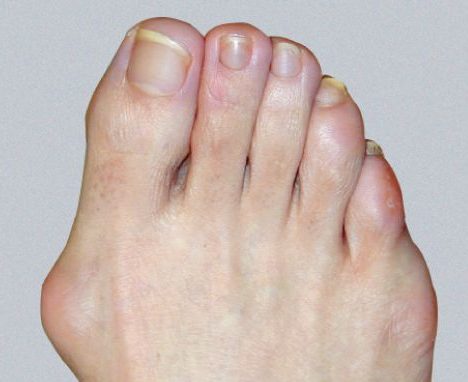
Severe Bunion
What is a Bunion?
A bunion (also known as hallux valgus) is often described as a bump on the side of the big toe, but it’s not as simple as that. The visible bump actually reflects changes in the bony framework of the foot. The big toe leans toward the second toe, rather than pointing straight ahead, and the first metatarsal bone that connects to it will deviate in the opposite direction. This buckling effect throws the bones out of alignment, which produces the bunion’s bump. What we are seeing is actually the side of the head and neck of the first metatarsal bone protruding inward toward the opposite foot, while the big toe is angled toward the little toes.
Bunions are a progressive condition. They begin with a leaning of the big toe, gradually changing the angle of the bones over the years and slowly producing the characteristic bump, which becomes increasingly prominent. The foot will widen and make it difficult to wear closed shoes. Symptoms usually appear at later stages, although some people never have any symptoms.
Causes
Most people believe that shoes cause bunions, but this is incorrect. Shoes may hasten a bunions appearance due to pressure and friction causing the tissue overlying the prominent bump to become more sore, inflamed, and in many cases, reddened.
The actual bunion itself is not inherited, but certain foot types that make a person prone to developing a bunion are. A good example of this is flexible feet. Feet that are flexible and flatten easily are much more prone to developing bunions due to joint instability. This is especially true of the joint of the big toe, which tends to succumb to the buckling forces.
In addition to being unattractive and painful, an untreated bunion can cause hammertoes, corns, calluses, arthritis of the joint, and chronic discomfort that may show up in other parts of the same foot, or other areas of the body due to compensation.
Symptoms
Symptoms, which occur at the site of the bunion, may include:
- Pain or soreness
- Inflammation and redness
- A burning sensation
- Possible numbness
Symptoms occur most often when wearing shoes that crowd the toes, such as shoes with a tight toe box or high heels. This may explain why women are more likely to have symptoms than men. In addition, spending long periods of time on your feet can aggravate the symptoms of bunions.
Diagnosis
Bunions are readily apparent—the prominence is visible at the base of the big toe or side of the foot. However, to fully evaluate the condition, your doctor may take x-rays to determine the degree of the deformity and assess the changes that have occurred.
Because bunions are progressive, they do not go away and will usually get worse over time. But not all cases are alike—some bunions progress more rapidly than others. A treatment plan can be developed that is suited to your needs.
Nonsurgical Treatment
Sometimes observation of the bunion is all that is needed. To reduce the chance of damage to the joint, periodic evaluation and x-rays by your doctor may be advised.
In many other cases, however, some type of treatment is necessary. Early treatments are aimed at easing the pain of bunions, but they will not reverse the deformity itself. These include:
- Changes in shoewear. Wearing the right kind of shoes is very important. Choose shoes that have a wide toe box and forgo those with pointed toes or high heels, which may aggravate the condition.
- Padding. Pads placed over or around the area of the bunion can help minimize pain. These can be obtained from your doctor or purchased online.
- Activity modifications. Avoid activity that causes bunion pain, including standing for long periods of time.
- Medications. Oral nonsteroidal anti-inflammatory drugs (NSAIDs), such as ibuprofen, may be recommended to reduce pain and inflammation.
- Icing. Applying an ice pack several times a day helps reduce inflammation and pain.
- Injection therapy. Although rarely used in bunion treatment, injections of corticosteroids may be useful in treating the inflamed bursa (fluid-filled sac located around a joint) or arthritis (within joint) sometimes seen with bunions.
- Orthotic devices. In some cases, over the counter arch supports or custom-made orthotic devices may be prescribed by the doctor.
When Is Surgery Needed?
If nonsurgical treatments fail to relieve bunion pain and when the pain of a bunion interferes with daily activities, it is time to discuss surgical options with your doctor. Together you can decide if surgery is best for you.
A variety of surgical procedures is available to treat bunions. The procedures are designed to remove the bump of bone, correct the changes in the bony structure of the foot and correct soft tissue changes that may also have occurred. The goal of surgery is the reduction of pain and deformity.
In selecting the procedure or combination of procedures for your particular case, your doctor will take into consideration the extent of your deformity based on the clinical examination, x-ray findings, your age, your activity level, and health factors. The length of the recovery period will vary, depending on the procedure or procedures performed.
Types of Bunion Surgeries We Perform
- Lapiplasty® 3D Bunion Correction
- Traditional Bunionectomy
- Minimal Incision Bunionectomy
- Simple Bunionectomy


